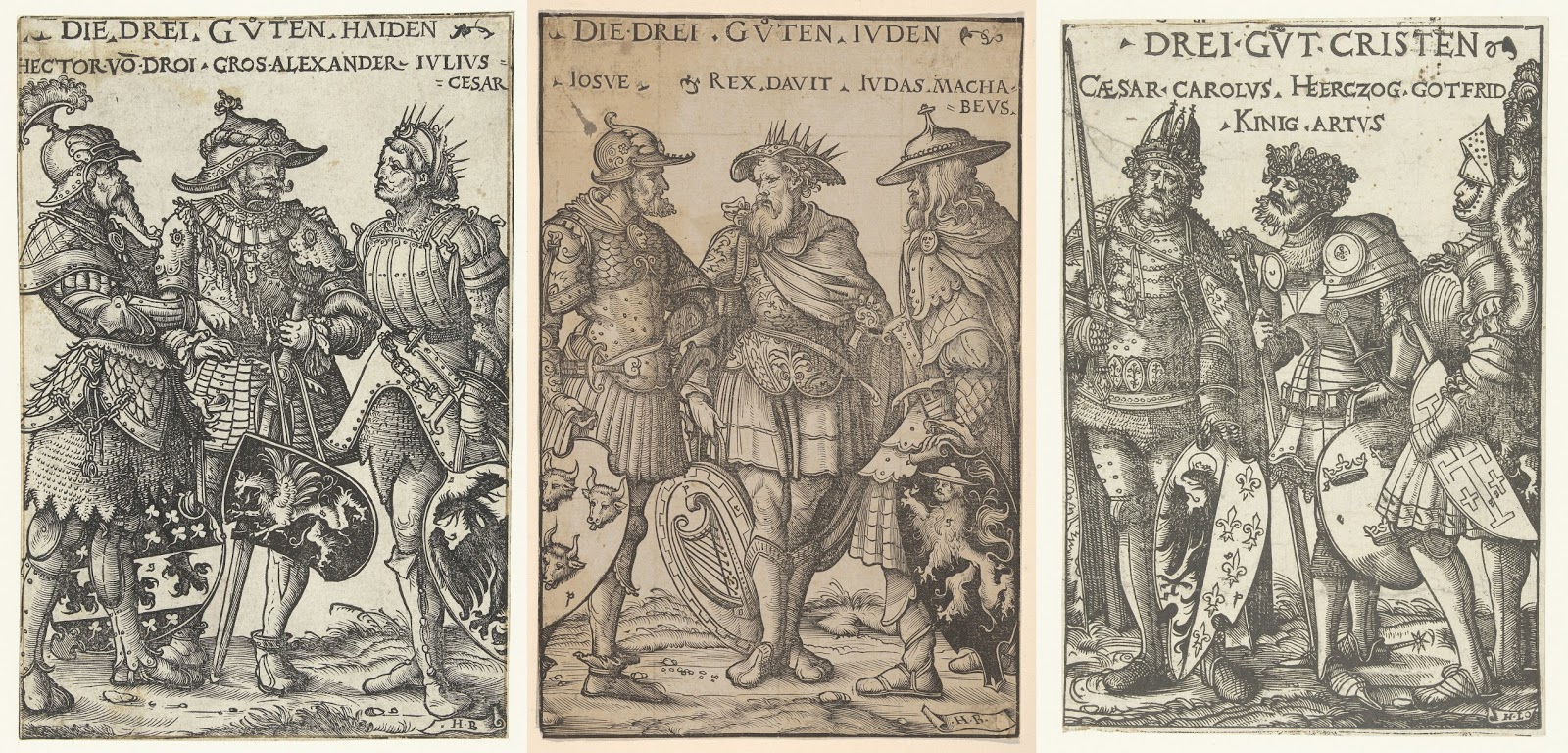Hans Burgkmair the Elder: The Nine Worthies (1516 - 1519)
(Rijksmuseum, Amsterdam, The Netherlands & metropolitan museum of Art, New York, USA)
A set of 3 engraving by the German artist Hans Burgkmair the Elder (1473–1531). These three prints show what is called 'the nine worthies', 9 historical and fictitious persons who represents all moral virtues of the perfectly chivalrous warrior. Studying the life of each warrior would thus form a good education of any aspiring knight. The nine warriors are divided into three groups (shown here from left to right):
The three good pagan Heroes:
- Hector of Troy: a Trojan prince from homer's Iliad in which he fights in the Trojan war
- Alexander the Great (356 - 323 BC): king of Macedon and founder of one of the largest empires in the ancient world, stretching from Greece to India
- Julius Caesar (100 – 44 BC): Roman politician, writer and general, regarded as one greatest military commanders in history.
The three good Jewish Heroes:
- Joshua: from the biblical books Exodus, Numbers and Joshua - he became the leader of the Israelite tribes after the death of Moses after the Exodus from Egypt. In the Bible Joshua led the conquest of Canaan
- King David: the second king of the United Kingdom of Israel and Judah (about 1000 BC).
- Judas Maccabeus: a Jewish priest who led the Maccabean Revolt (167–160 BC) against the Seleucid Empire in Israel.
The three good Christian Heroes:
- King Arthur: a legendary British leader who led the defense of Britain against Saxon invaders according to various medieval stories
- Charlemagne (A.D. 742 – 814): king of the Franks, Holy Roman Emperor and founder of the Carolingian Empire
- Godfrey of Bouillon (1060 – 1100): Duke of Lower Lorraine and one of the leaders of the first crusade (1095–1099). He became the first ruler of the crusader state Kingdom of Jerusalem as 'Defender of the Holy Sepulchre' (he refused the title of king stating that the true King of Jerusalem was Christ).
Engraving from 1516-1519.
